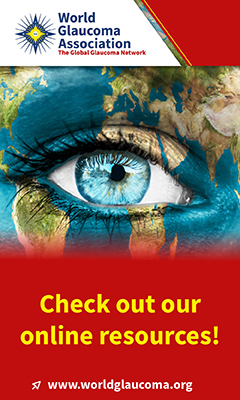advertisement

Editors Selection IGR 17-4
Anatomical Structures: Should we rather be looking at the macula?

Comment by Jin Wook Jeoung on:
118332 Are Macula or Optic Nerve Head Structures Better at Diagnosing Glaucoma? An Answer Using Artificial Intelligence and Wide-Field Optical Coherence Tomography, Chiang CYN; Braeu FA; Chuangsuwanich T et al., Translational vision science & technology, 2024; 13: 5
The three-dimensional (3D) structural alterations in both the macula and optic nerve head (ONH) are critical for identifying glaucomatous damage, particularly in the earlier stages of the disease. Optical coherence tomography (OCT) has proven invaluable for diagnosing and monitoring glaucoma by capturing 3D images of these regions.1,2 Recently, a new wide-field 3D-OCT technique has emerged, offering the advantage of simultaneously acquiring structural information from both the ONH and macula, potentially improving diagnostic accuracy.
Building on this foundation, Chiang et al. developed a deep-learning algorithm to automatically segment ONH and macula structures in wide-field 3D-OCT scans. This was followed by the application of a 3D convolutional neural network (3D-CNN) to classify glaucoma and non-glaucoma eyes. The datasets utilized for classification were derived from macula scans, ONH scans, and wide-field scans, enabling a comparative analysis of diagnostic performance across these imaging modalities.
The study demonstrated that the classification algorithm achieved the highest diagnostic accuracy using wide-field scans, with an area under the curve (AUC) of 0.99 ± 0.01, compared to AUCs of 0.93 ± 0.06 for ONH scans and 0.91 ± 0.11 for macula scans. These findings provide robust evidence supporting the diagnostic superiority of wide-field OCT over localized imaging modalities. A key strength of this study lies in its innovative integration of artificial intelligence and advanced wide-field OCT technology. The deep-learning algorithm facilitated precise segmentation and robust analysis, thereby enhancing diagnostic accuracy. Clinically, this approach holds significant potential for earlier glaucoma detection and improved management of complex cases, advancing the application of imaging technologies in routine ophthalmologic practice.
Nonetheless, several limitations warrant consideration. The cross-sectional design restricts the ability to assess the utility of wide-field OCT in monitoring glaucoma progression longitudinally. The dataset, while substantial, may not fully represent the diversity of patient demographics or glaucoma subtypes encountered in clinical practice. Moreover, the study did not evaluate the diagnostic performance of wide-field OCT in early or borderline glaucoma cases, which are critical for timely intervention. The reliance on structural imaging alone also overlooks the potential benefits of integrating functional assessments, such as visual field testing, to achieve a more comprehensive diagnostic approach.
In summary, this study highlights the promise of wide-field 3D-OCT combined with deep-learning methods for improving glaucoma diagnosis through detailed structural analysis. Future research should focus on addressing these limitations, including conducting longitudinal studies to assess the technology's value in disease monitoring, expanding datasets to enhance generalizability, and exploring the integration of functional testing.
References
- Sakamoto A, Hangai M, Nukada M, et al. Three-dimensional imaging of the macular retinal nerve fiber layer in glaucoma with spectral-domain optical coherence tomography. Invest Ophthalmol Vis Sci. 2010;51(10):5062-5070.
- Asaoka R, Murata H, Hirasawa K, et al. Using Deep Learning and Transfer Learning to Accurately Diagnose Early-Onset Glaucoma From Macular Optical Coherence Tomography Images. Am J Ophthalmol. 2019;198:136-145.
Comments
The comment section on the IGR website is restricted to WGA#One members only. Please log-in through your WGA#One account to continue.Log-in through WGA#One
